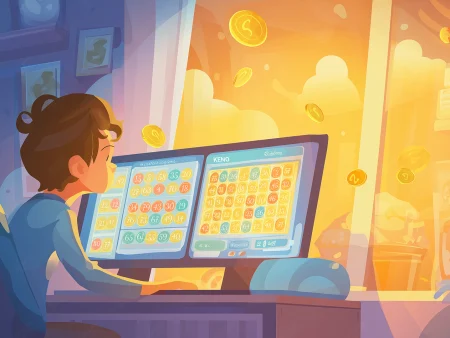Most craps players have stared at the big “FIELD” box and thought: easy money. One roll, a wide net of numbers, and an instant payout if you hit. The temptation is real, especially when the table’s buzzing and chips are flying. But anyone who’s played long enough knows the field bet can drain your bankroll fast if you rely on it too often.
This guide breaks down craps playing the field with real odds, the psychology that makes it so attractive, and whether it deserves a place in your betting plan. If you’ve ever asked yourself if the field bet is a clever play or just another casino trap, you’ll get your answer here.
Índice
What Is the Field Bet in Craps?
The field bet is one of the easiest wagers in craps, and that’s exactly why so many new players are drawn to it. It’s a single-roll bet, no tracking point numbers, no waiting around. Drop your chips in the large rectangle marked “FIELD” across the center of the table, and you’re in.
Veja como isso acontece:
- If the shooter rolls a 2, 3, 4, 9, 10, 11, or 12, you win instantly.
- Any other number, and the house sweeps your chips.
- Most winning numbers pay 1:1, but rolling a 2 or 12 gives you a premium payout, typically 2:1 or 3:1 depending on house rules.
That extra payout is what makes the field look so tempting, especially to casual players who want quick action without complicated rules.
If you’re still learning the layout and want to see exactly where the field sits in relation to the pass line and other bets, check our layout da mesa de dados guia.
Field Bet Odds and Payouts
Numbers That Win, Numbers That Lose
At first glance, the field looks like it covers half the table. In reality, it’s far thinner. Out of the 36 possible dice outcomes, only 16 are winners. The rest will eat your stake in one roll.
Here’s a clear breakdown:
| Rolar | Resultado | Typical Payout |
| 2 | Ganhar | 2:1 or 3:1 (varies by house) |
| 3 | Ganhar | 1:1 |
| 4 | Ganhar | 1:1 |
| 5 | Perder | – |
| 6 | Perder | – |
| 7 | Perder | – |
| 8 | Perder | – |
| 9 | Ganhar | 1:1 |
| 10 | Ganhar | 1:1 |
| 11 | Ganhar | 1:1 |
| 12 | Ganhar | 2:1 or 3:1 (varies by house) |
That’s why the field bet looks attractive, wide coverage, quick payouts, but the math is stacked against you.
House Edge on the Field Bet
The field isn’t front and center because it helps players. It’s there because it’s profitable for the house. With only a 44% chance of winning, the field feels lively but leaves the casino with a built-in edge.
- Vantagem da casa: usually 2.8% to 5.5% depending on whether 2 and 12 pay double or triple
- Compare that to:
- Pass line bet: around 1.4%
- Placing 6 or 8: around 1.5%
Casinos want players chasing the field because it’s flashy and delivers instant results. But if you’re playing for long-term value, bets like the linha de passe or placing the 6 and 8 will protect your bankroll far better.
For a deeper look at how every bet stacks up, check our full payout breakdown across all bets.
Why Players Love the Field Bet (and Why It Hurts Long-Term)
The field bet is designed to pull players in. It looks generous, covering a wide slice of the dice outcomes, and it pays instantly. You drop a chip, the dice roll, and you either win or lose on the spot. No waiting for points to establish, no juggling multiple wagers. It’s clean, fast, and exciting.
That speed is why it feels so rewarding. Hit two or three field wins back-to-back and your stack jumps. The table energy feeds it too. Players cheer when a 2 or 12 lands, and the quick payouts create the illusion that everyone’s ahead.
But the math doesn’t bend. The house edge doesn’t care about your streak. Over time, it will grind you down. The field’s wide-looking net is misleading because the most common rolls in craps, 5, 6, 7, and 8, are all losers.
The best way to think about the field is like a scratch card mid-roll. It gives you a rush when it hits, but it isn’t built for long-term value. Use it as a side thrill, not as the backbone of your strategy.
Craps Field Bet vs Other Side Bets
The field isn’t the only flashy wager on the layout. Craps is packed with side bets designed to grab attention, and the field sits right alongside options like the horn bet, the yo bet (11), and the C&E (a mix of craps numbers and 11).
What makes the field stand out is its accessibility. Most side bets target single numbers or quirky combinations with eye-catching payouts but terrible odds. The field feels broader and safer, which is why beginners often try it first. It covers multiple outcomes, pays instantly, and the table energy around it makes it seem less risky than it really is.
The reality is different. The field is still a high-edge wager. It may not be as punishing as dropping chips on a hard 4 or a hopping 7, but it firmly belongs in the “fun but costly” category. For many players, it ends up being a gateway side bet before they branch out into more advanced, and often smarter, strategies.
If you want to see which side bets actually deserve a place in a bankroll-friendly game plan, check our advanced side bet strategies and smarter plays in the Guia de estratégia de dados.
When (If Ever) to Play the Field Bet
Situational Play
There are moments when dropping a chip on the field makes sense, but it’s about entertainment, not profit. Some players use it to chase table momentum when the dice are hot and the energy’s buzzing. Others treat it as a quick bankroll experiment, taking a few shots in short sessions just to keep the action lively.
If you approach it with that mindset, the field bet can be fun. Just don’t confuse it with a sustainable strategy.
Smart Alternatives
If your goal is to stretch your bankroll and manage variance, lean on bets with a lower house edge.
- Pass line: the backbone of disciplined craps play, sitting at roughly 1.4% house edge.
- Place bets on 6 and 8: another strong option, with an edge around 1.5%, and frequent hits that keep payouts flowing.
That’s why experienced players and pros rarely bother with the field. They might toss it in occasionally for variety, but consistency and long-term growth come from sticking with bets that deliver real value over thousands of rolls.
Final Take: High-Risk Thrill or Smart Move?
The field bet is exciting, no doubt about it. It’s fast, flashy, and hits often enough to make you feel like you’re onto something. But the math doesn’t bend. With a house edge that’s two to three times higher than safer wagers like the pass line or placing the 6 and 8, the field is designed to bleed your bankroll if you lean on it too much.
That doesn’t mean you should avoid it altogether. Think of the field as a scratch card mid-roll, fun for a quick thrill, not a long-term strategy. Use it to spice up your sessions, but keep your core bankroll focused on smarter, low-edge bets that actually hold value.
Ready to sharpen your craps play?
- Explore nosso Guia de estratégia de dados for proven betting systems
- Confira nosso Tabela de pagamento de dados to see where the real value lies
- Play at trusted casinos offering low house-edge craps to put that knowledge into action
FAQs About Craps Field Bets
A field bet is a one-roll wager covering the numbers 2, 3, 4, 9, 10, 11, and 12. If any of these land, you win instantly. Any other number and the bet loses.
It’s appealing because it covers multiple numbers, but with only about a 44% chance of winning, the house edge is much higher than core bets like the pass line or placing the 6 and 8.
There are 16 winning combinations out of 36 possible dice rolls, which works out to roughly a 44% chance depending on whether the table pays double or triple on 2 and 12.
There’s no system that overcomes the house edge. Some players use hit-and-run tactics, dropping chips on the field for short bursts, but for sustained play, safer bets with lower edges are better.
The field bet sits in a large rectangle across the center of the table. If you’re still learning, check our craps table layout for beginners for a full visual breakdown.












































